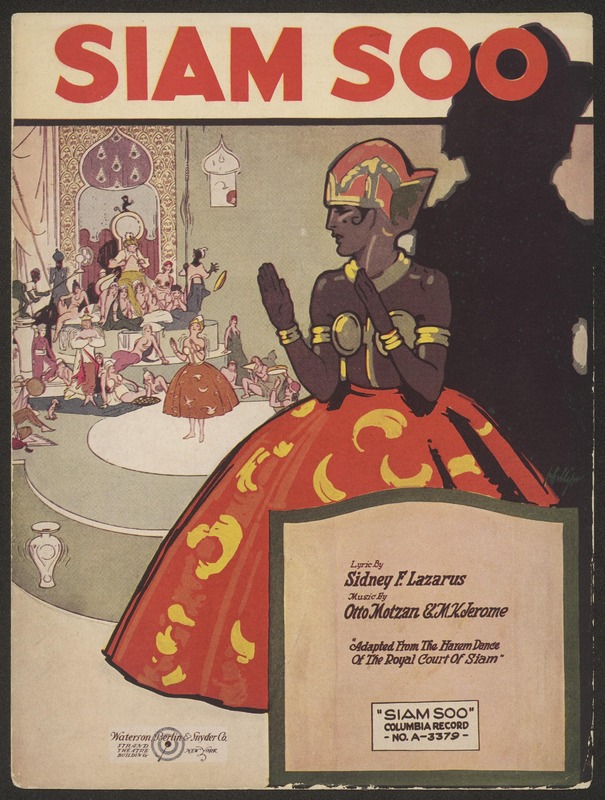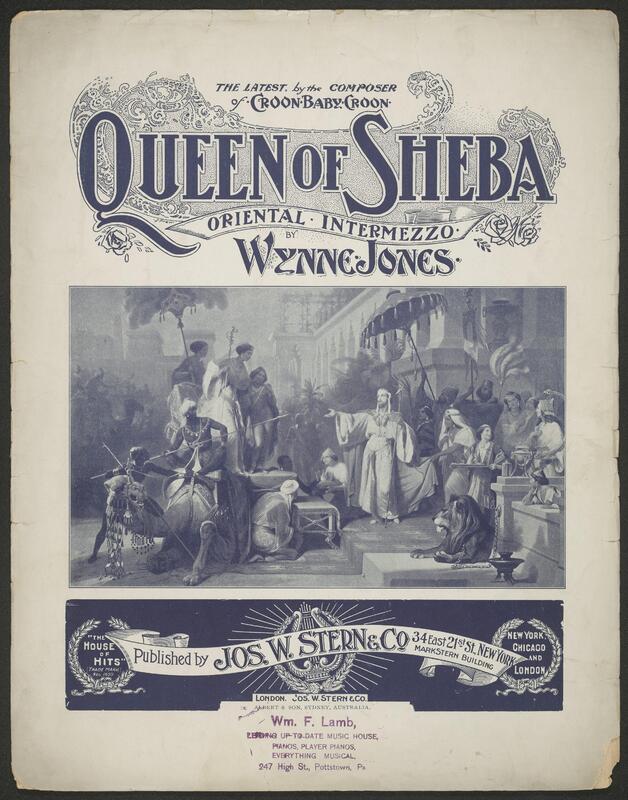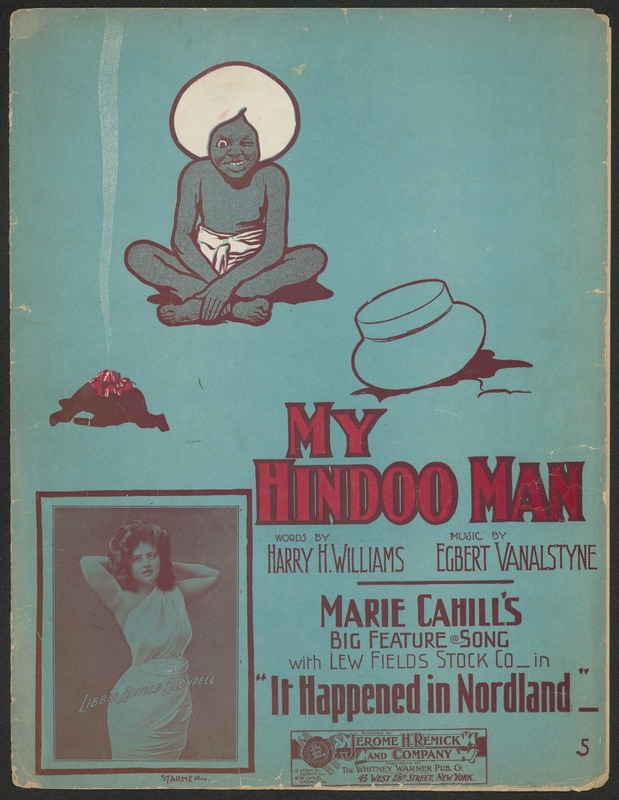Visual Depictions
Siam Soo
The cover of Siam Soo, published in 1921, disrupts the steady stream of formulaic depictions of the non-West. A dark-skinned woman is displayed across the majority of the cover, hands up as if she is in the midst of a dance move. Upon closer examination, smaller female figures dot the rest of the cover, doing the same motion as the main woman. Several other near-naked women crowd around the feet of a man who sits upon a central throne. These illustrations of women clearly objectify and sexualize them, which is further supported by the lyrics found within Siam Soo. Certain lyrics in the song state: “In Siam where strange things they do” and “And when she’d start to wiggle, She’d put the men around her in a trance.” The lyrics of this song simultaneously perpetuate the objectification of foreign women, blatantly sexualizing her body and dancing, as well as patronization of their leadership, as several kings are also supposed to be entranced or disempowered by the dancing women.
What is most striking about the cover are the few almost imperceptible dark-skinned servants depicted. All have heavily red outlined mouths and are also depicted as the only people in the room holding any weapons and dropping things. This insinuation of a sense of bruteness, violence, or barbarism as well as clumsiness is heavily reminiscent of American minstrel imagery.
Furthermore, the image includes several elements that are often depicted in stereotypical Middle Eastern architecture, and the characters are drawn to have relatively dark skin. However, the title states that this song is supposedly taking place in Siam, present-day Thailand, where the architectural style is drastically different and the residents tend to have lighter skin. This demonstrates how Western creators equated Middle Eastern culture with the rest of Asia, the diverse continent melding into a monolith to outsiders.
Queen of Sheba: Oriental Intermezzo
Queen of Sheba was published in 1902, and although it does not have any lyrics, the album cover in and of itself is very revealing. The Queen of Sheba is the ruler of Sheba, located in southwestern Arabia, known mostly from the Bible, although there are multiple variations of her story across many religions. According to the Bible, the Queen visited King Solomon with a camel caravan full of jewels and spices to test his wisdom through a series of riddles.
The song’s cover itself can be divided into two sides, the left side with Queen Sheba and the right side with King Solomon. On the left, the colors are more dim and muted with shadows obscuring a lot of the details. The Queen is depicted with darker skin, adorned with lavish clothes and jewelry. However, by her side are several Black servants who are comparatively dressed in fewer garments and hold more weapons. One girl is seemingly completely naked and several are depicted without shoes. This contributes to a perception of lack of civilization and barbarism. On the other hand, King Solomon and his entourage are bathed in light with much clearer details. King Solomon himself seems to have a spotlight shined on him, dressed in blinding white with a servant holding the tails of his robe. Furthermore, every single servant on his side is fully dressed, holding staffs, flags, and umbrellas instead of spears and pokers. Lastly, while Queen Sheba’s representative animal seems to be an aggravated, rowdy camel, King Solomon is accompanied by a calm, stoic lion. The use of animals as symbols once again reinforces the dichotomy that this image generates between how the East and the West are perceived.
My Hindoo Man
My Hindoo Man, published in 1905, has a very jarring cover. A “Hindoo man”, who more so resembles a young boy, is depicted in a style that is extremely reminiscent of how minstrelsy in America is portrayed. In typical American depictions of minstrelsy, Black people are depicted as having unrealistically dark skin, disproportionately large whites of their eyes, and thick red lips. As a result, there are subtle similarities between American minstrelsy depictions (see example image here) and this album cover, particularly through the drawing of the whites of his eyes, which are very large and piercing.
The lyrics themselves render the racism more explicit. The song follows a “Hindoo fakir man” attempting to woo a “little Hindoo maid”. He is described as playing tricks with hypnotic eyes, promising the maid that he “would be her slave.” These descriptions show how the West views “the Hindoo man” as deceptive and fit to be enslaved. This song reflects the perceptions that the West held of the Middle East, or in this case, how it was also transferred to perceptions of India as well.


